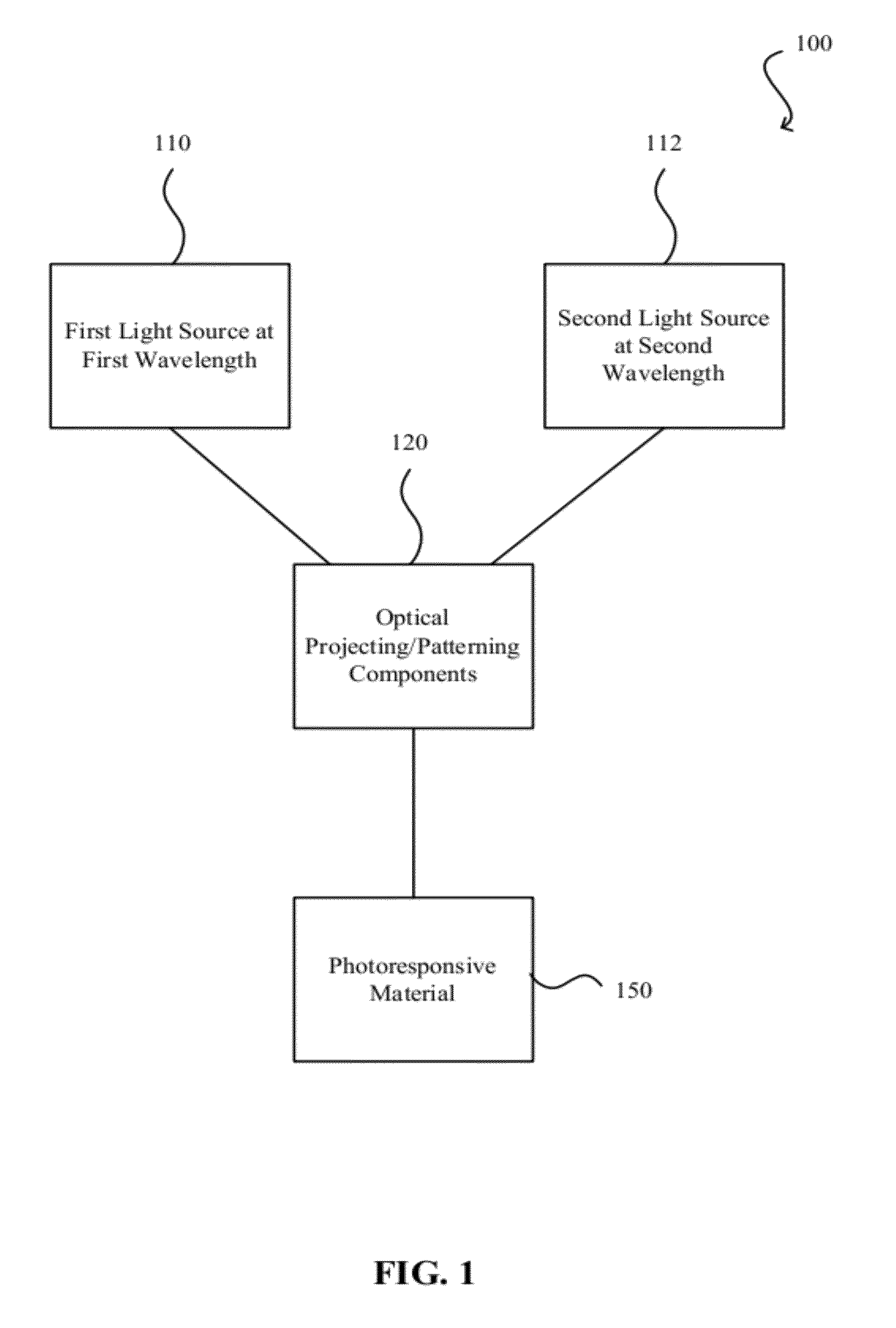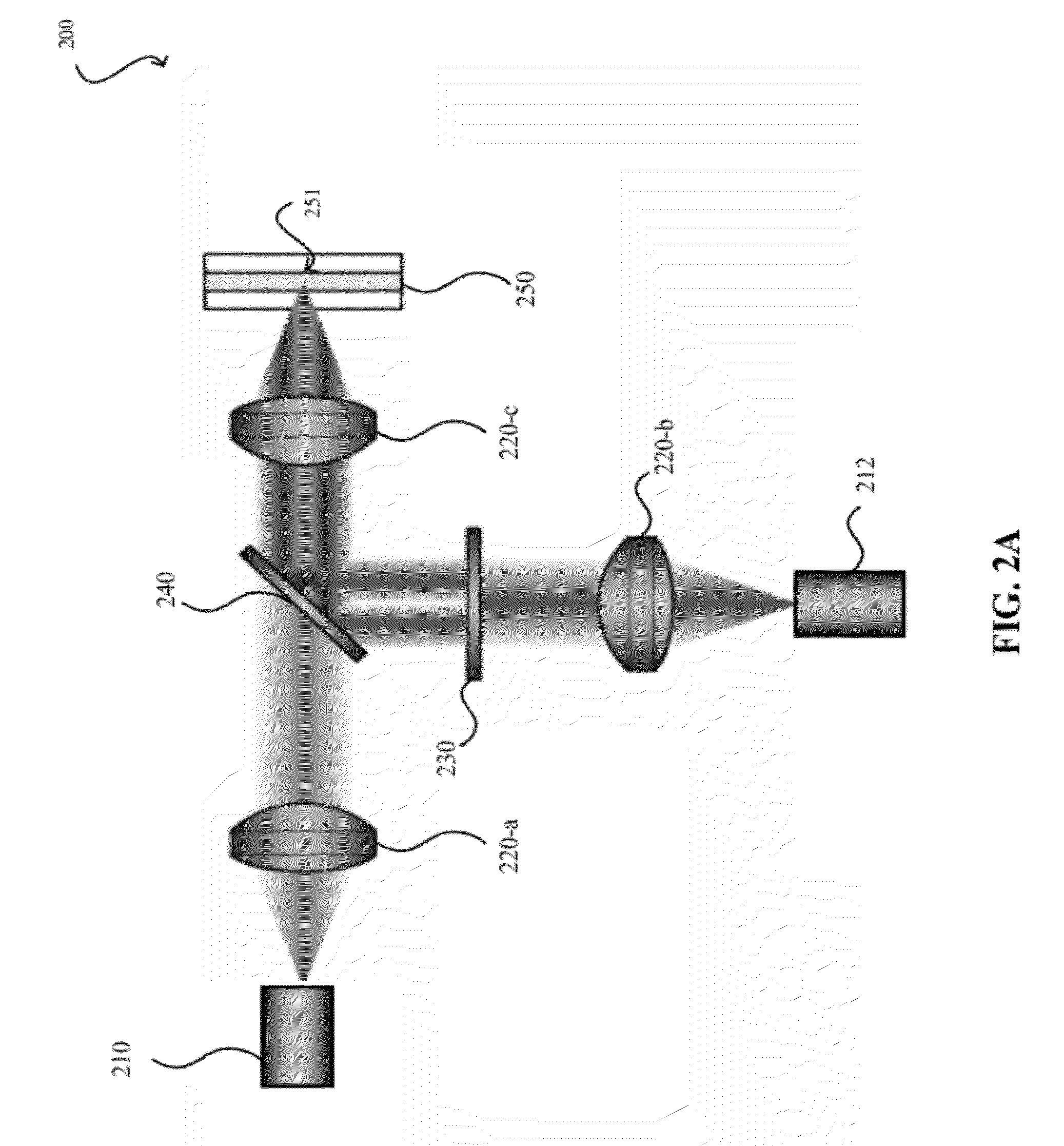Diffraction unlimited photolithography
a photolithography and diffraction technology, applied in the field of photofabrication, can solve the problems of increasing costs, affecting the ability of photoinitiators to alter the solubility of carbon-based molecules, and limiting the diffraction of photolithography,
- Summary
- Abstract
- Description
- Claims
- Application Information
AI Technical Summary
Benefits of technology
Problems solved by technology
Method used
Image
Examples
Embodiment Construction
[0030]Embodiments provide devices, methods, systems, and materials for photofabrication that can create features not limited by the physics of diffraction. A projected optical pattern initiates polymerization or a solubility change in a photoresist, photopolymer, or more generally, a photoresponsive organic material. A second optical pattern in a different color is superimposed to inhibit and spatially restrict polymerization or solubility change. In some embodiments, superimposition occurs at a periphery. A final feature size and shape may therefore be given by the difference of the initiating pattern and the inhibiting pattern. This difference may not be limited by diffraction like traditional photolithography or photofabrication in general. The limit may now be given by the contrast ratio that can be maintained between initiation and inhibition. This contrast limit may be determined by both the chemistry of the two-color photoresist and / or the optics of the two-color photolithogr...
PUM
| Property | Measurement | Unit |
|---|---|---|
| wavelength | aaaaa | aaaaa |
| solubility | aaaaa | aaaaa |
| second wavelength | aaaaa | aaaaa |
Abstract
Description
Claims
Application Information
 Login to View More
Login to View More - R&D
- Intellectual Property
- Life Sciences
- Materials
- Tech Scout
- Unparalleled Data Quality
- Higher Quality Content
- 60% Fewer Hallucinations
Browse by: Latest US Patents, China's latest patents, Technical Efficacy Thesaurus, Application Domain, Technology Topic, Popular Technical Reports.
© 2025 PatSnap. All rights reserved.Legal|Privacy policy|Modern Slavery Act Transparency Statement|Sitemap|About US| Contact US: help@patsnap.com



